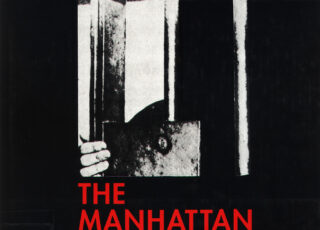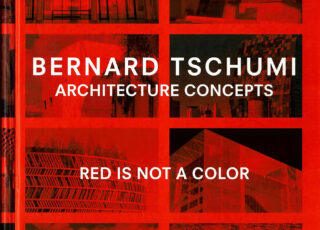Brown, The Genius of Rome 1592-1623
At the close of the 16th century, Europe’s most talented painters flocked to Rome, the Eternal City, to execute commissions for popes, princes, ...
Continue Reading →Hersey, Il significato nascosto dell’architettura classica
Perché gli architetti usano ancora gli ordini classici? Perché utilizzare forme derivate dagli antichi templi greci quando la religione greca antica è morta ...
Continue Reading →Krause, Wie beschreibt man Architektur?
Die »Promenade à Versailles« der Madeleine de Scudéry, 1669 erschienen, ist die wichtigste Quelle für den Zustand des frühen Versailles – für Schloß, ...
Continue Reading →Castiglione, The Book of the Courtier
Today the Book remains the most reliable and illuminating account of Renaissance court life and of what it took to be the “Perfect ...
Continue Reading →Carter, Anthony Blunt His Lives
When Anthony Blunt died in 1983, he was a man about whom almost anything could be – and was – said. As Surveyor ...
Continue Reading →Kottman, The Insistence of Art
Philosophers working on aesthetics have paid considerable attention to art and artists of the early modern period. Yet early modern artistic practices scarcely ...
Continue Reading →Burke, The Fabrication of Louis XIV
Louis XIV was a man like any other, but the money and attention lavished on his public image by the French government transformed ...
Continue Reading →Borromeo, Sacred Painting
Federico Borromeo, Cardinal-Archbishop of Milan (1564–1631), is well known as a leading Catholic reformer and as the founder of the Ambrosiana library, art ...
Continue Reading →Hays, Architecture Theory since 1968
In the discussion of architecture, there is a prevailing sentiment that, since 1968, cultural production in its traditional sense can no longer be ...
Continue Reading →- _English Language
- Artists in Rome
- Christian Iconography
- City
- Empire, Architecture + Catholicism
- Italy
- Popes, Vatican, Rome
- Rome
Blunt, Guide to Baroque Rome
Identifies and sketches the history of baroque-style churches, palaces, villas, and fountains in Rome and includes a brief look at the Vatican and ...
Continue Reading →Most liked books

Tschumi, The Manhattan Transcripts
May 23, 2025
Tschumi, Red is not a Color
May 23, 2025Recent Comments
Categories
- _English Language 1454
- _French Language 55
- _German Language 69
- _Italian Language 54
- _Latin Language 45
- 1750-1850 64
- 17th Century 77
- 17th culture and other cities in Italy 5
- 19th century 45
- 20th Century 151
- 21th Century 75
- Aesthetics 5
- Afrofuturism 3
- Ancient Literature 37
- Anthropocene 1
- Anthropology 3
- Architectural Theory 228
- Architecture + Philosophy 37
- Architecture and Literature, Symbolism 36
- Art 13
- Art Theory 110
- Artificial Intelligence 11
- Artists in Rome 20
- Astronomy 2
- Autobiography 1
- Bernini 19
- Biology 5
- Catalogue 2
- Christian Iconography 18
- Christianity 13
- Cinema 2
- City 45
- Classical 1
- Construction 1
- Contemporary 2
- Design 29
- Digital Architectonics 26
- Drawings 41
- Economy 31
- Empire, Architecture + Catholicism 14
- England & British Isles 26
- Enlightenment Library 127
- Evolution 6
- Fashion 6
- Feminism 20
- Film Festival 1
- France 47
- Gender and Sexuality Studies 5
- Gothic 13
- Greek, Roman Library 99
- Historiography 43
- Humanism 12
- India 5
- Islam 5
- Italy 80
- Landscape Architecture 8
- LGBT 1
- Libraries 0
- Linguistics 6
- Literary Criticism 11
- Literary Theory 82
- Literature 95
- Low Countries (Benelux) 14
- Mathematics 61
- Medicine 4
- medieval library 38
- medieval literature 12
- Modern 51
- Monuments + Conservation 27
- Music Theory 1
- Mysticism 4
- Mythology 19
- Nature, Ecology, Animals 4
- Neurobiology 1
- Opera 5
- Philosophy 346
- Physics 16
- Poetry 6
- Politics 76
- Popes, Vatican, Rome 27
- Portrait, Sculpture, Materiality 56
- Post-Modern 22
- Programming 2
- Psychology 22
- Religion 23
- Renaissance 86
- Renaissance Library 80
- Rhetorics 1
- Roman Architecture 21
- Rome 122
- Schinkel 8
- Science 57
- Sociology 21
- Sound 7
- Sources 56
- Spain 10
- Switzerland 48
- Uncategorized 73
- Urbanism 53
